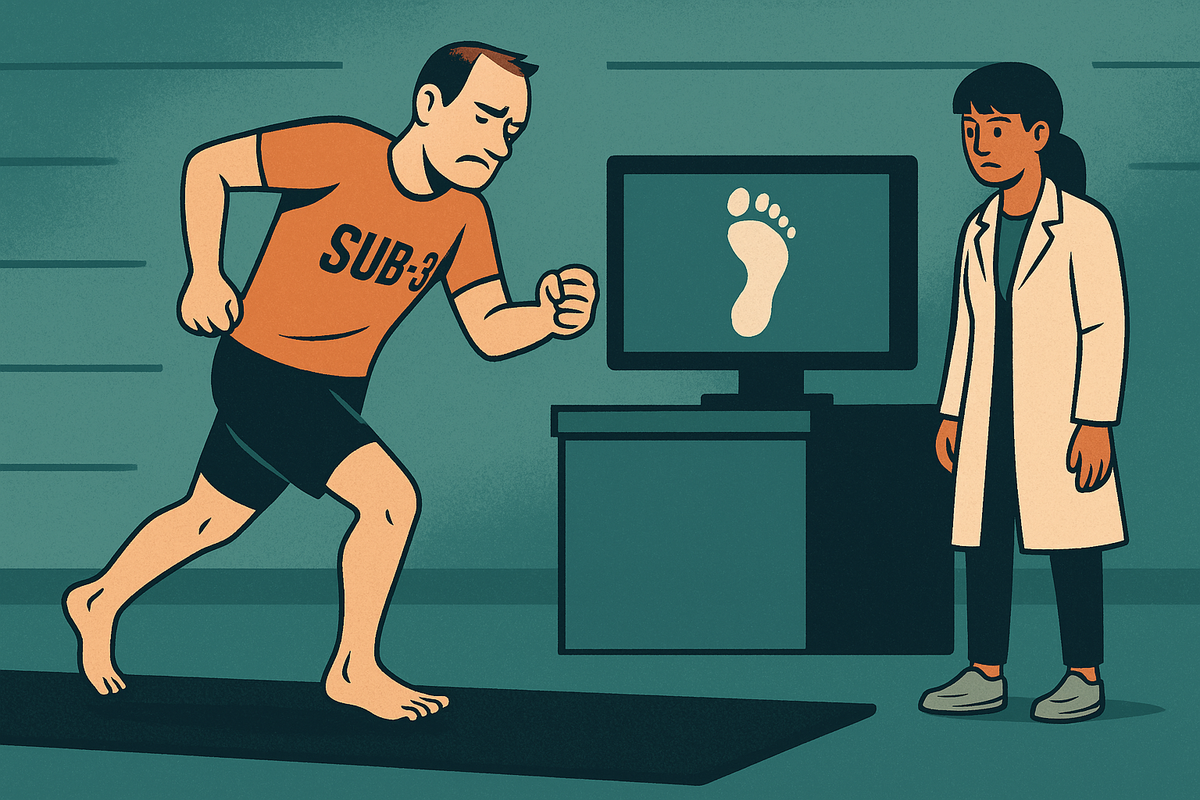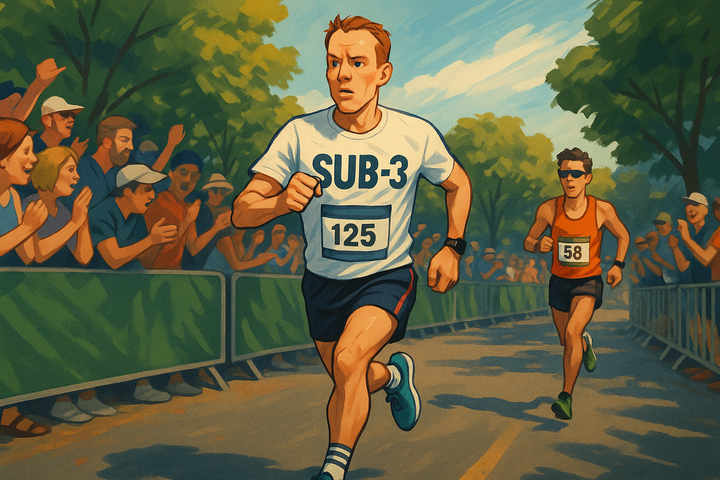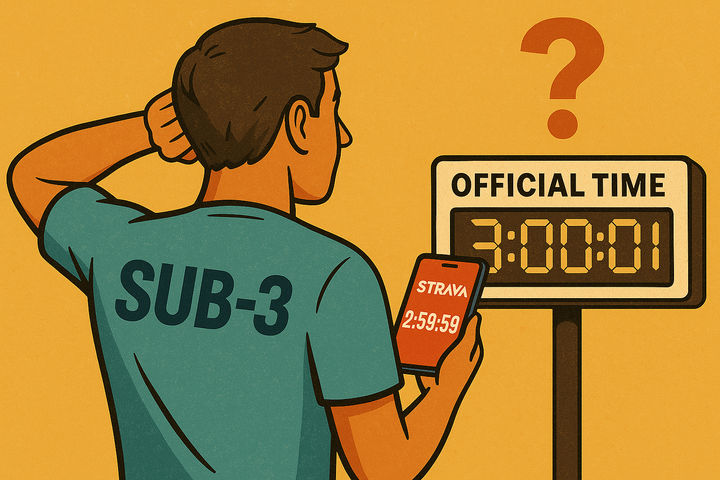Should sub-3 runners get a gait analysis?
Gait analysis might work for beginners - but at sub-3 level, one-size-fits-all advice can do more harm than good. Trust your stride, not just the science.

Gait analysis sounds like a smart, scientific way to choose running shoes. But for many sub-3 runners, it can do more harm than good.
Several years ago, I had a professional gait analysis done in a specialist indoor facility. It wasn’t just a quick treadmill scan in a running shop - it involved running back and forth across a mat, followed by reams of almost indecipherable data and a verdict: I overpronated and needed corrective shoes. What followed was one of the worst six-month spells I’ve had as a runner.
The shoes felt heavy, awkward and unnatural. I developed persistent issues with my right calf that wouldn’t shift, despite weeks of physio. Oddly, I started to feel fine when racing in neutral shoes - lighter models I’d kept for 10Ks. Eventually, I started sneaking them into my tempo sessions. My stride felt freer. My pace improved. And when I finally ditched the “corrective” shoes altogether, the calf problem cleared up in days.
What changed? My guess is that the gait analysis captured something false. I only had about 15 metres to run before I had to slow down - far from natural conditions. I also run in five different zones and land differently in each. At threshold pace I’m on my forefoot, whereas on a recovery run it’s closer to a mid-foot landing. The whole analysis seemed built on a faulty premise: that runners move in a single, consistent way.
There’s also research to back this up. A 2014 study published in the British Journal of Sports Medicine followed nearly 1,000 runners over a year and found that moderate pronation was not linked to increased injury risk - in fact, some pronators had lower injury rates than those with so-called ideal alignment. Another randomised trial in the same journal found no significant difference in injury rates between runners using neutral, stability or motion-control shoes, regardless of their foot type. And in real-world settings, gait appears far more fluid than lab tests suggest: a 2024 study found that fewer than one in three treadmill gait patterns matched a runner’s natural outdoor stride. One brief treadmill or mat test just doesn’t capture that complexity.
There’s nothing wrong with having a conversation about shoe choice with a professional. And for beginners, some form of analysis might help get you off to a good start. But at sub-3 level, you likely already know what feels right. If a shoe causes pain or throws off your rhythm — even if a trained eye says it’s right — trust your stride. Comfort and performance are better guides than data alone.
Enjoyed this article? Help keep Sub-3 running — support us with a coffee.
To help fund the running of the site, Sub-3 is an Amazon Associate and earns from qualifying purchases. We only recommend gear or kit that has genuinely helped in our own running and that we believe is worth considering.



